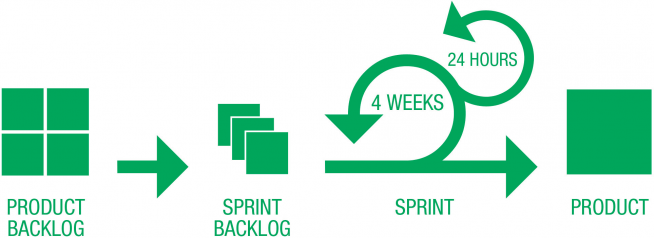Ways of Working115
Building an Agile Marketing Team
Evan Leybourn, Reka Moksony
March 19, 2019
Evan Leybourn, Reka Moksony
March 19, 2019
Headquartered in Germany, Intland develops an Application Lifecycle Management product for the software industry, known as codeBeamer. codeBeamer supports the complete software development lifecycle from demand, requirements, development, to test management.
As a commercial ALM tool, codeBeamer is used worldwide particularly in Germany and the US, across multiple industries. It is also available on Javaforge, free of charge for open-source projects.
 Like many technology companies, our focus was traditionally on product development rather than marketing. By focusing on our technology, we had minimal investment in marketing and did not have a dedicated marketing team. This is fairly common in technology companies of similar size, where:
Like many technology companies, our focus was traditionally on product development rather than marketing. By focusing on our technology, we had minimal investment in marketing and did not have a dedicated marketing team. This is fairly common in technology companies of similar size, where:
At Intland, it wasn’t until 2013 that we recognised that, due to our growing international presence and organic growth, marketing was essential for further success.
We established a dedicated, although distributed, marketing team, with the most critical competencies (communication, public relations (PR), design, business development, digital marketing, etc.). The new team is primarily responsible for communication, corporate identity, and events management.

Next, we considered how to integrate this new marketing team into our existing, non-hierarchical, company structure. Intland was already successfully using Agile (specifically Scrum) for product delivery; would this also work for the marketing team? Starting with the concepts described in Eric Ries’ book “The Lean Startup”, we worked closely with the software development teams to learn how they applied Agile techniques and principles.
We chose to create an Agile marketing approach, based primarily on Scrum, with 4-week sprints. Our Agile processes include:
This Agile approach to marketing means we don’t plan big-bang campaigns, but rather small experiments (within each sprint). If a marketing approach does not work, we can change it with minimal cost.
Because our Agile marketing process was developed when we initially created the team, we did not need to adapt to any existing practices. Therefore the marketing team could adopt the Scrum approach fairly easily. We spent the first month experimenting and learning how Scrum can work for us, and after that it became an everyday practice. Over time, we have had to make some changes and improvements to our processes.
For example, we added the postponed status to our workflow when we recognized that we had cases where there was a delay in our client’s acceptance, so issues could not be closed within the sprint. We have also had to modify the value of a story point in order to have comparable measures. At the beginning there were some misunderstandings on how to use story points which resulted in discrepancies.
Our first challenge was to overcome the fact that this was a new department with staff who had never worked together, and no one had any experience with Agile practices. We approached this in three ways:
It was easy to sell the idea to our new marketing team, since the software development department has proven that the Agile approach could work.
To understand its fundamental values, we started reading lots of articles and books about Agile. Ultimately what drove the success of this Agile adoption was the fact that management gave us the freedom to pick-up only those Agile practices that were applicable to marketing; that is, to select what was useful and leave out what was not. Ultimately, our adoption of Scrum in a marketing context was not overly challenging, nor did we have any cultural acceptance issues.
While all of us have different work styles based on our work history, we really enjoyed implementing of Scrum and learned something new (which is very rewarding).
Our Agile marketing team has, by all measures, been successful. The team is highly-productive and has already achieved a number of beneficial outcomes for Intland. In the last 3-months, we have closed between 55 to 60 requirements/issues per month and have grown to 4 full-time employees. This is especially impressive when you consider that our marketing team has only been in existence for 3 months, marketing is new to the company, and we are working in a new domain. As a testament of success, both the marketing team members and other company executive are happy with our Agile marketing approach. The basis of all parties’ satisfaction is our approach to communication, which is an essential part of Agile. From the marketing team’s point of view, there have been a number of direct benefits from our Agile adoption. These include:
Finally, my advice to a marketing department that wants to adopt Agile practices would be:
At Intland, we are proud that our marketing team is successfully using Agile and that they have shown a deep understanding of the underlying Agile principles in their work.
Please subscribe and become a member to access the entire Business Agility Library without restriction.